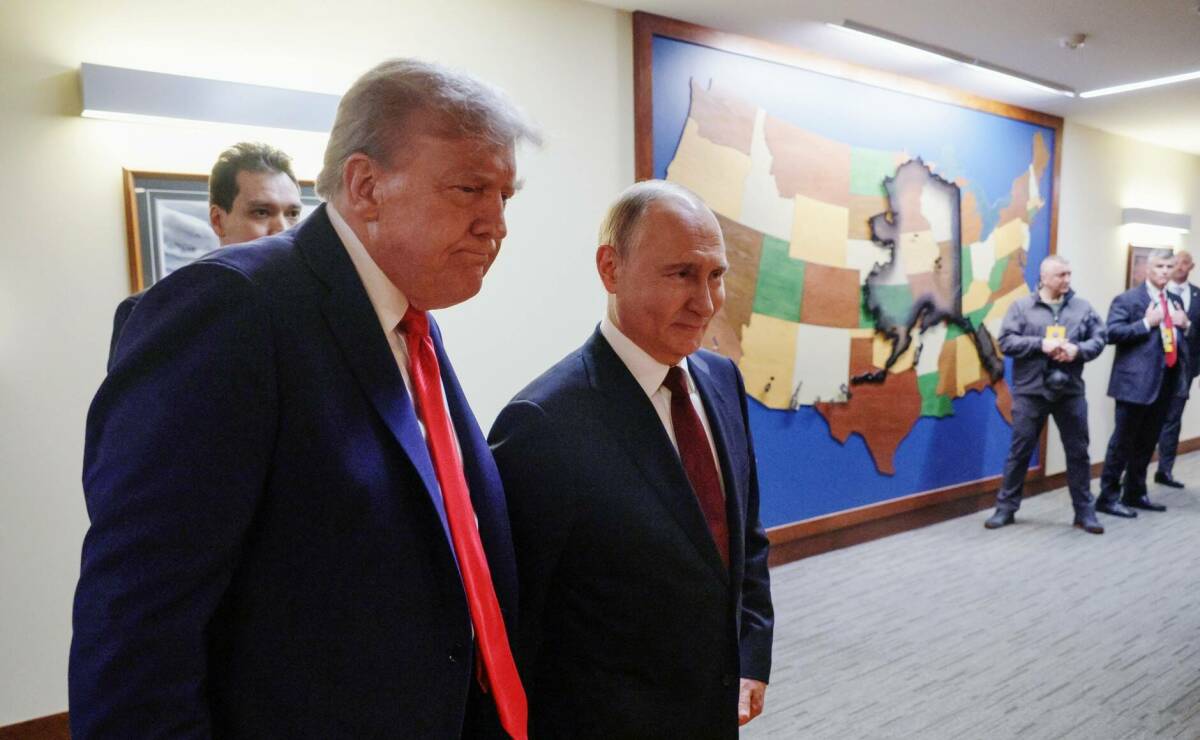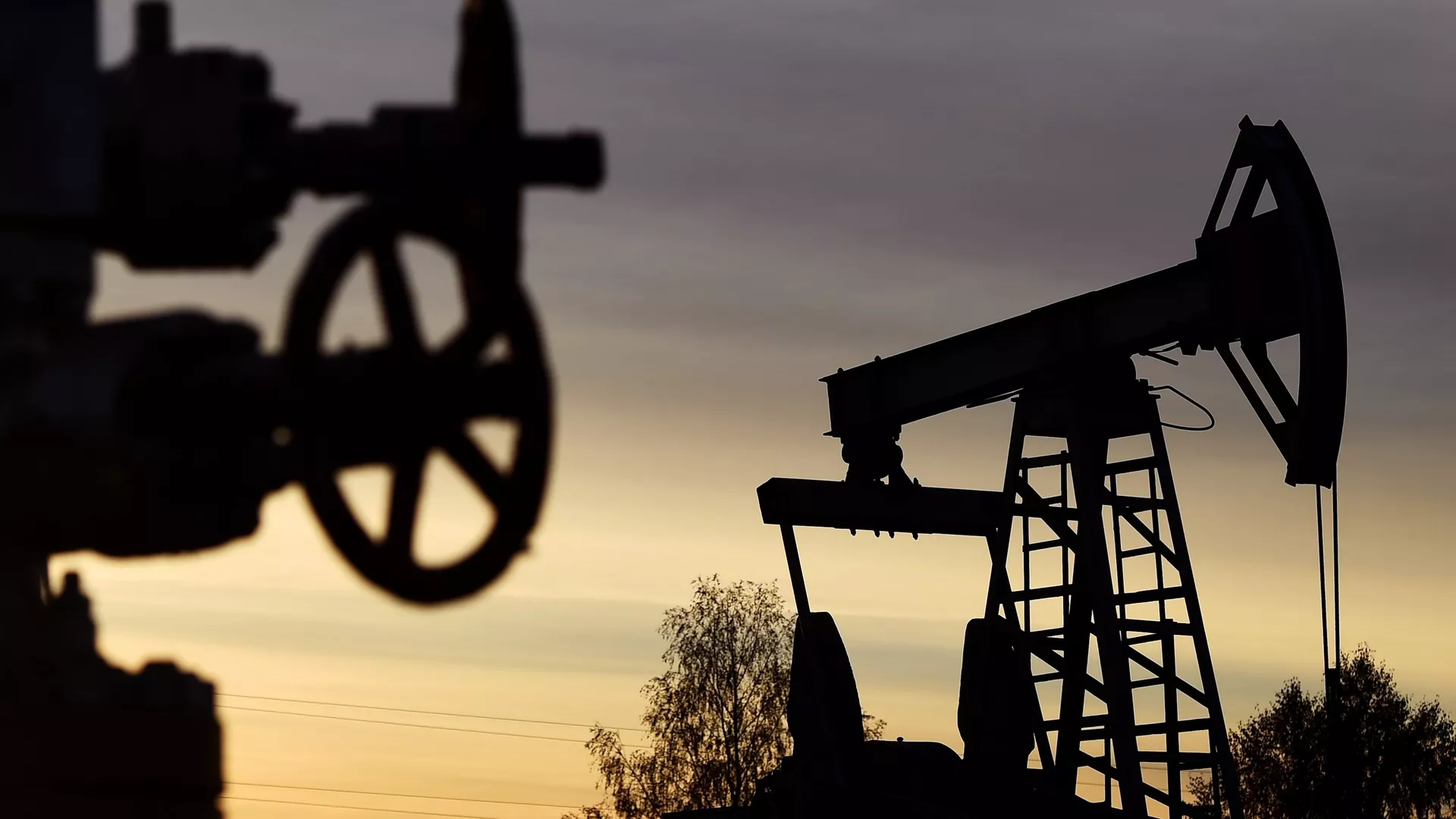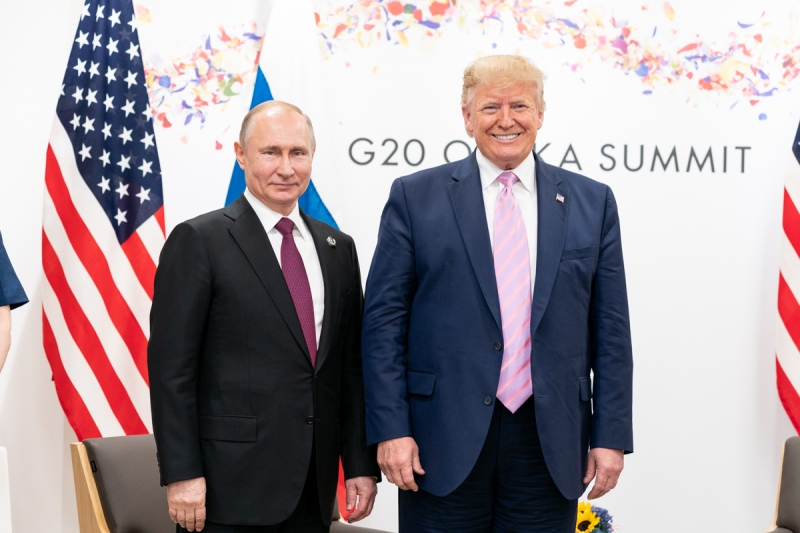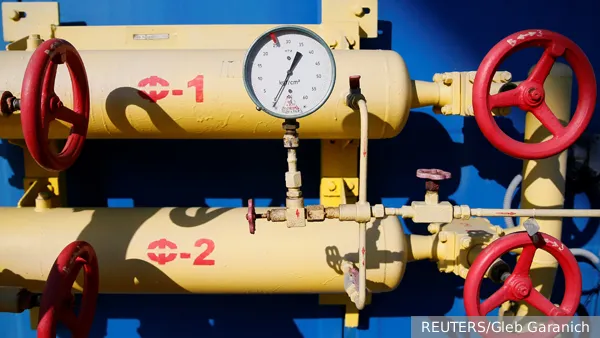By the end of August, the exchange rate of the ruble is expected to remain at around 80 per dollar. Its strengthening below 75 is possible if the parties sign a deal to resolve the Ukrainian conflict, experts surveyed by Izvestia believe. At the same time, the MOEX index is capable of rising to 3200-3400 points. Overall, the summit in Alaska created a favorable backdrop; however, real outcomes from this meeting will only become apparent once the parties move towards concrete actions. Meanwhile, U.S. President Donald Trump has already stated that he does not currently plan to impose new sanctions or tariffs against Russia and its energy resource buyers. This article discusses what to expect from the oil market and how trade between Russia and the U.S. may change.
What Putin and Trump Discussed in Their August 15 Meeting
Russian President Vladimir Putin met with U.S. President Donald Trump in Alaska on August 15. Among the key outcomes of the Anchorage summit was the leaders' recognition of certain progress in resolving the Ukrainian conflict. The two heads of state also discussed other critical topics, including trade, sanctions, and tariffs.
Although the Alaska summit did not lead to any legally binding results, it demonstrated that the Russian economy has always been and will continue to be a part of the global economic system. Vadim Kovergin, an associate professor at the Institute of Economics, Management, and Law at MGPU, highlighted that it is unlikely that many European countries can exclude Russia from this system. The summit showed that the U.S. is willing to constructively continue addressing issues, he added.
The positive rhetoric from the meeting creates a favorable information background; however, a real economic effect will likely manifest only when declarations turn into concrete actions. The value of these negotiations lies primarily in reducing geopolitical risks that have long hindered economic development.
When Will Anti-Russian Sanctions Be Lifted?
The U.S. administration has decided to postpone the introduction of sanctions against Russia. According to Trump, there is currently no need for this. Given the desire of both parties to establish economic cooperation, including in the Arctic—an issue that Putin mentioned in Anchorage—there could even be a possibility of partial lifting of restrictions.
Overall, the Russian economy is coping with the difficulties posed by sanctions and significant budget expenses, emphasized Vadim Kovergin from MGPU. However, lifting the restrictions would provide a good boost for its development. Still, it is unlikely to happen in the near future, as Donald Trump does not unilaterally make decisions.
"The strong anti-Russian lobby will hardly allow him to lift even part of the sanctions without resolving the conflict in Ukraine, so a serious discussion about lifting sanctions can only begin after the conflict concludes," believes Kovergin.
What Will Happen to Trade Between Russia and the U.S. by 2025?
At a press conference following the meeting, Vladimir Putin reminded that during the new administration's tenure, trade turnover with the U.S. increased by 20%. For the previous year, it amounted to approximately $3.5 billion. In contrast, in 2014, for example, it reached around $40 billion, recalled Alexey Tarapovsky, founder of Anderida Financial Group.
Over the past six months, Russian exports to the U.S. reached $2.5 billion, particularly in the sales of fertilizers, uranium, and platinum, noted Alexander Timofeev, associate professor at the Department of Economics at the G.V. Plekhanov Russian University of Economics. In comparison, American supplies amounted to $285 million, primarily involving vaccines, medical devices, and reagents.
"The dynamics this year contribute positively to the forecast; however, the development of the situation will depend on further negotiations and concrete outcomes. Currently, neither side wants to make abrupt moves as they understand the consequences. This instills confidence that the trend will continue," said Alexey Tarapovsky.
The trade turnover between the two countries is expected to be around $3.7–4.5 billion this year, according to independent expert Andrey Barkhota. By 2026, it may exceed $10 billion, given the active development of trade and economic relations between Russia and the U.S., he anticipates.
What Will Happen to the Oil Market?
On Friday, just before the Alaska summit, the oil market closed with declining prices. Brent lost 1.5%, trading at $66.12 per barrel. On Monday, analysts also anticipate a cautious price reaction to the meeting between the Presidents of Russia and the U.S.
In an interview with Fox News before the meeting with Vladimir Putin, Donald Trump indicated that he might not impose additional import tariffs against buyers of Russian oil. Later, he refrained from imposing such measures against China thanks to the progress achieved in negotiations. This situation resembles the lessons from the U.S.-China trade war: more often than not, it ends with a balance of interests and gradual adaptation by both sides, believes Mikhail Dyakonov, founder and CEO of Freight Logistics Group.
According to Ekaterina Kosareva, managing partner of VMT Consulting, Russian oil supplies will continue, and the impact on raw material prices will be minimal for now.
"The introduction of immediate sanctions against Russia and secondary sanctions against other countries has been postponed. All attention will now be focused on the meeting between Trump and Zelensky, which is scheduled for Monday in Washington. However, it is important to note that European leaders have not abandoned their intention to exert further pressure on Russia and are preparing a 19th package of sanctions. Even if significant breakthroughs in negotiations occur, it is reasonable to expect a drop in prices from current levels. In such a case, I believe OPEC+ will intervene, as even today's prices can hardly be described as comfortable," she argues.
Sergey Tereshkin, General Director of Open Oil Market, agrees with his colleague. He believes that risks of reduced oil exports, which intensified following the imposition of tariffs by the U.S. on India, are now diminishing.
"There are unlikely to be any new restrictions regarding Russia, and this will lead to the stabilization of the Urals discount to Brent at around $10 per barrel. The long-term consequences can be assessed over the next few months as the negotiation process progresses," notes the expert.
Following the summit, Vladimir Putin's statement was made first, indicating a high level of trust towards the Russian president from the U.S. administration and the potential for further balanced decisions on peaceful resolution, emphasizes Tamara Safonova, General Director of the Independent Analytical Agency in the Oil and Gas Sector (NAANS-Media).
Equally important, in her opinion, was the initiative proposed by Vladimir Putin before negotiations to include the extension of the Strategic Arms Reduction Treaty on the agenda, which is set to expire in February 2026.
"This statement from the Russian president, combined with the proposal to address Ukraine's security issues and guarantees against threats to European countries within a comprehensive peace agreement, completely dismantles the myth of a 'Russian threat' that has allowed military budgets to be developed and the conflict in Ukraine to be sustained over the past four years," emphasizes Tamara Safonova.
The expert believes that, as a result of the summit, "investors will react to the peace initiatives, the prospects for Russian-American cooperation, the reduction of U.S. tariff pressures, and the increased demand for hydrocarbon resources, which will be a positive factor for oil prices."
Implications for the Ruble Exchange Rate and Market After the Negotiations
The Central Bank set the ruble exchange rate for the weekend slightly above 80 per dollar. For comparison, on August 15, it was 79.76 rubles. The negotiations proceeded according to a neutral scenario, so in the coming week, the dollar is expected to trade around 78–81, considers Natalia Milchakova, senior analyst at Freedom Finance Global.
At the same time, the expert does not rule out the possibility that the national currency could strengthen below 75 per dollar, but this would only occur if the parties reach a peace agreement regarding the Ukrainian conflict.
Moreover, the market has already reacted to the meeting between the two leaders. The MOEX index exceeded 3000 points but subsequently fell to 2950 after the summit. This volatility is characteristic of periods of uncertainty, added Nadezhda Kapustina, a professor at the Department of Economic Security and Risk Management at the Financial University under the Government of the Russian Federation.
She believes that by the end of summer, the index could reach 3200-3400 if the positive dynamics in the negotiation process continue. The annual outlook suggests potential growth to 3500-3800 points, although much depends on the practical implementation of agreements, she clarified.
Nevertheless, the dynamics on August 18 will depend on what information comes in at the start of trading, believes Albert Koroев, head of the stock market expert department at BCS Mir Investitsiy. If there are no new significant geopolitical statements, consolidation after a pullback is possible.
Source: Izvestia



